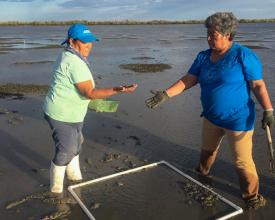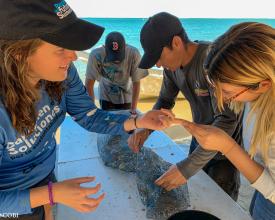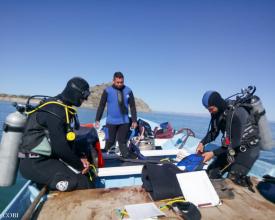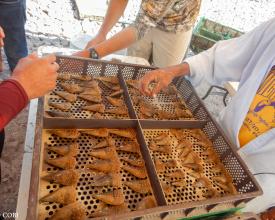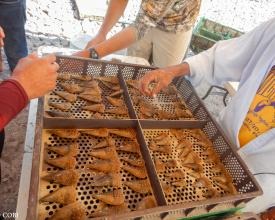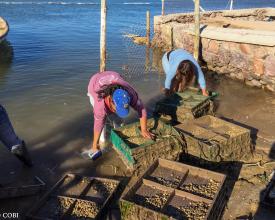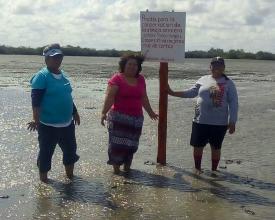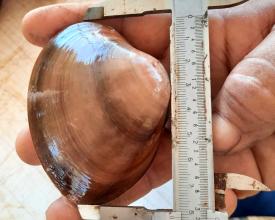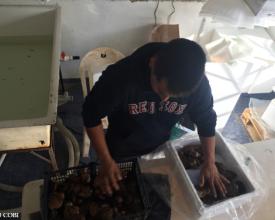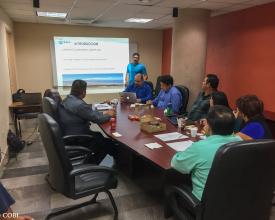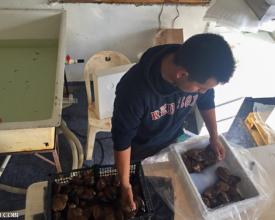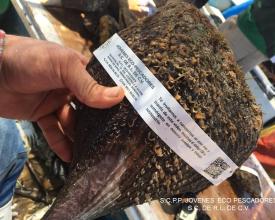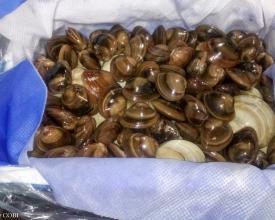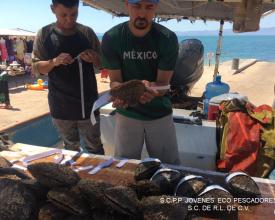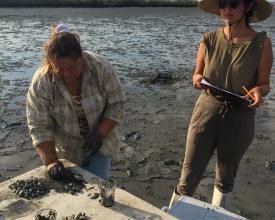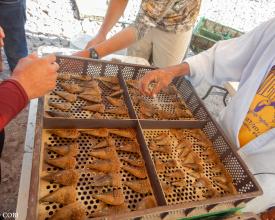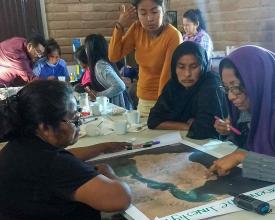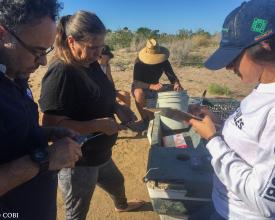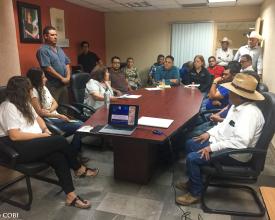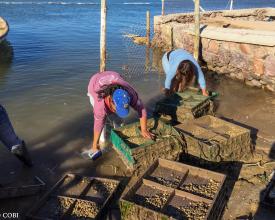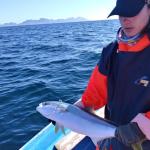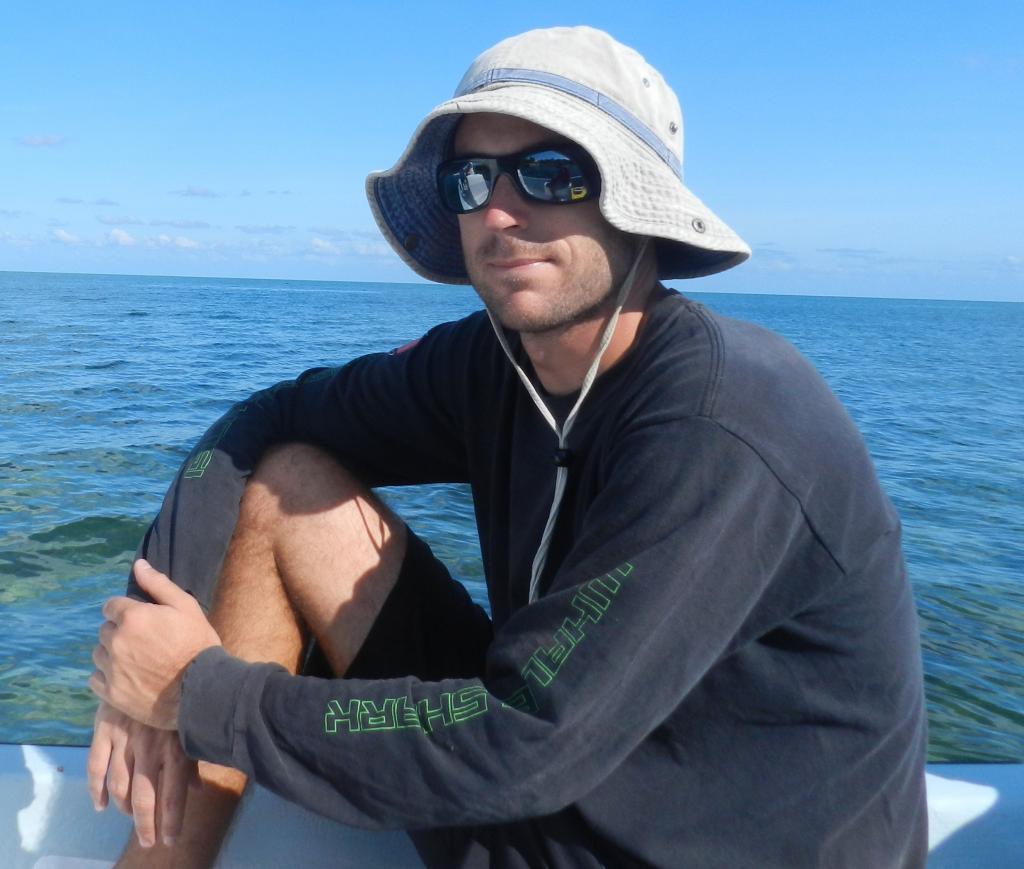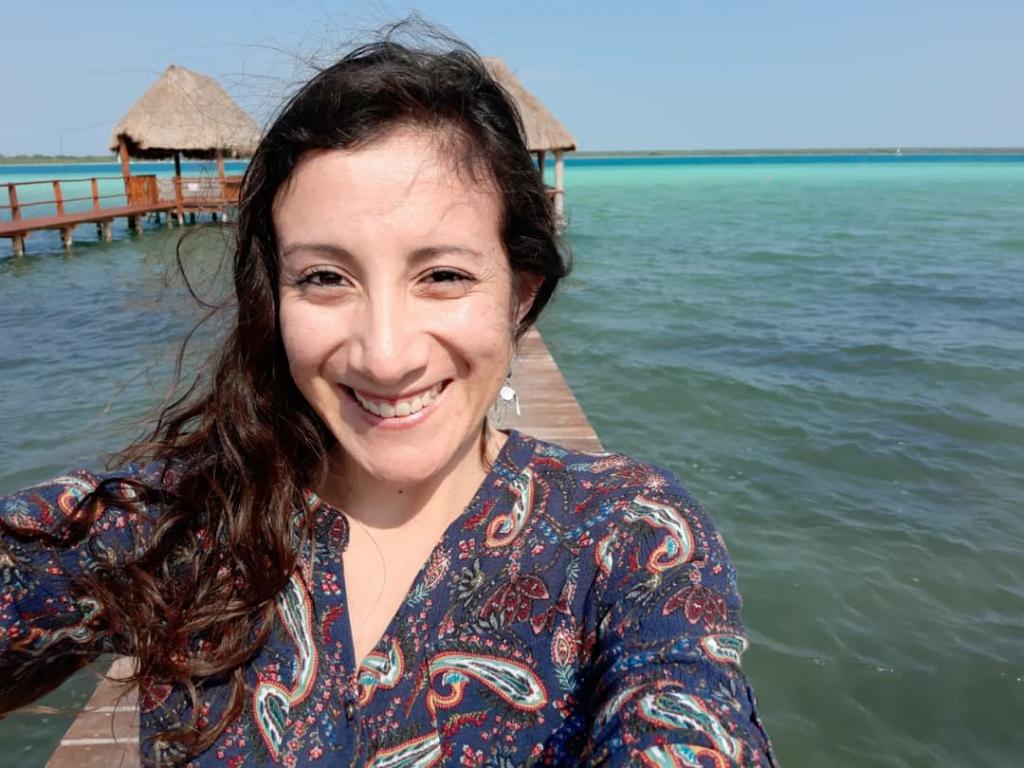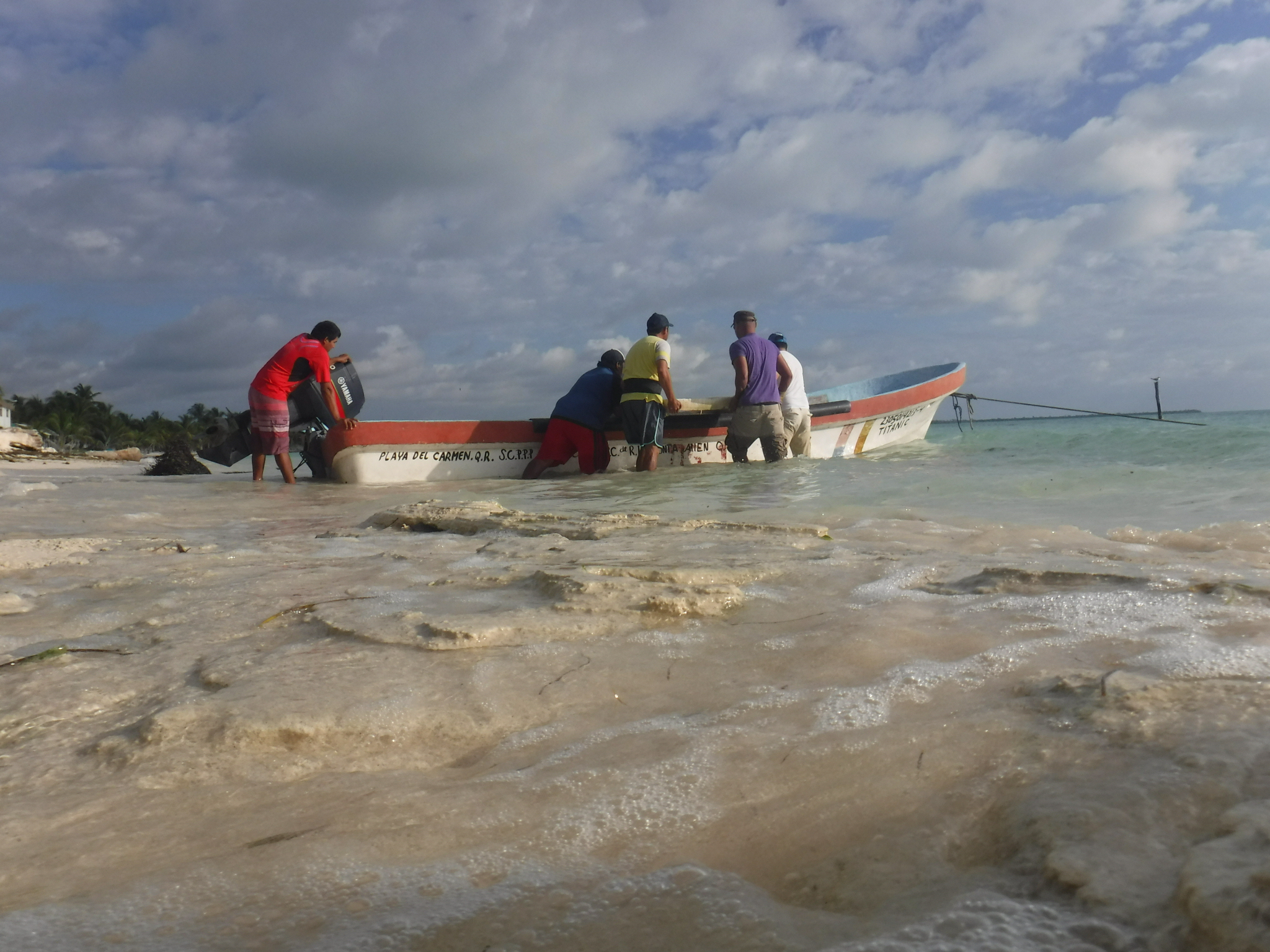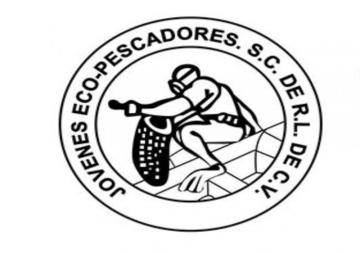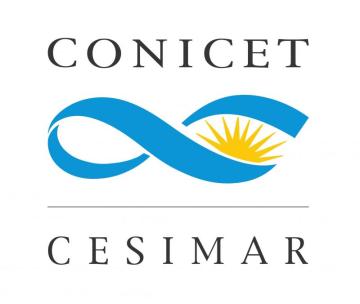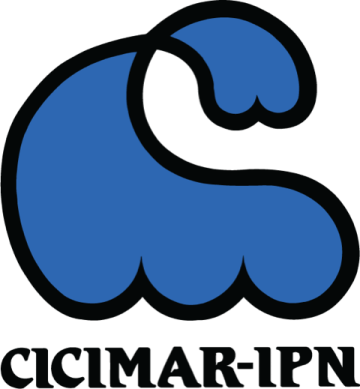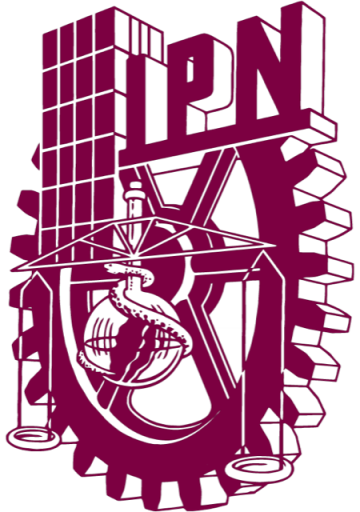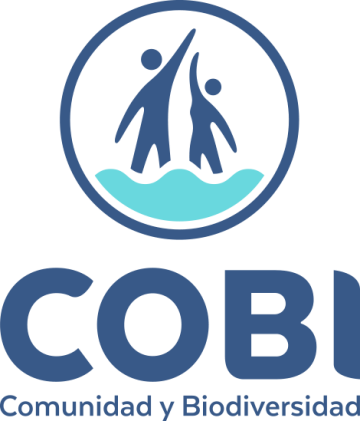
Sustainability in the clam and tripe fishery
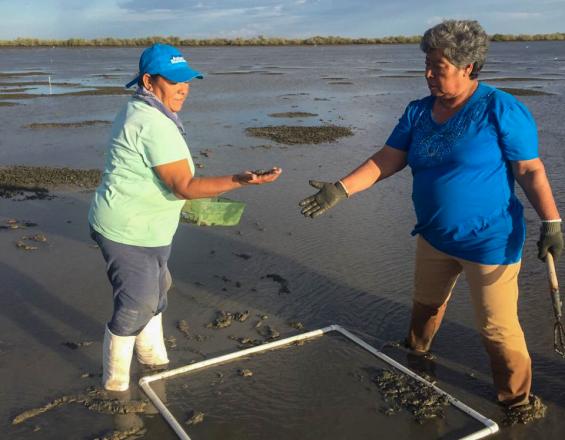
Clam and callus fisheries play a very important role for the wellbeing of coastal communities in northwestern Mexico. These fisheries face challenges such as overexploitation, illegality, poor management, lack of information, low involvement of the productive sector in decision making, among others. To address these challenges, COBI has implemented various management tools in collaboration with different stakeholders (fishing communities, government sector, academia and civil society organizations). These tools include the design and adoption of integrated harvesting strategies. In addition, systematized information has been generated to help design and evaluate harvesting strategies, identify environmental impacts on the fishery, and create sustainable management systems for clams and corns, either through formal processes, by means of an official decree, or traditional, through community agreements.
Context
Challenges addressed
- Follow-up on the procedures before government institutions to obtain or renew permits and quotas to be able to continue fishing.
- Very long response times.
- Difficulty in obtaining official recognition of good practices and informal community agreements in fisheries management.
- Encourage co-investment (by fishing communities, the government sector, civil society organizations, etc.) to ensure long-term sustainability of resources.
Location
Process
Summary of the process
Fisheries are complex systems that involve ecological, social, environmental and management aspects to achieve sustainability. The actors involved in fisheries face challenges associated with each of these aspects, which are similar among fisheries, as reported by CEA Consultants in their review of fisheries improvement projects (at the international level) and PRONATURA (in Mexico).
The components of this solution work together to address: (a) the lack of updated information, implementing a fisheries monitoring system at the artisanal and industrial level and analyzing the impact of the fishery on the ecosystem; (b) deficiencies in the management system through multi-sectoral alliances and an effective governance system; (c) the lack of planning and vision in the short and long term for the financial sustainability of fishery improvement projects, through co-investment of the different actors involved in the supply chain; and (d) gender equality, identifying the contribution of women in the value chain.
Building Blocks
Integrated management zones: a tool for restoring clam and tripe fisheries
Integrated management zones (IMZ) are an innovative approach for the management and recovery of bivalves, applied in the clam and callus fisheries in Mexico. To implement this tool, the following was done: 1) the work area was defined and delimited; 2) areas with suitable characteristics for bivalve culture were identified with the communities; 3) biological (measurements and weight of the organisms) and ecological (abundance, diversity, richness and distribution of the species) information was generated for the proposed area, and it was submitted to a vote among the users for its establishment as IMZ; and, 5) systematic monitoring was implemented to identify long-term changes.
This story began with a cooperative that wanted to recover the populations of callo de hacha. It was later replicated by a cooperative of young commercial divers and later by a group of women who consolidated as a cooperative to recover the estuarine clam population. The results have been positive; e.g., the population of callo went from 0 to 13,000 individuals in five years in an area of 25 hectares, collecting seeds from the natural environment.
Enabling factors
- The adaptive capacity of the communities to transition from artisanal fishing to an artisanal aquaculture and mariculture scheme.
- Technical and financial support from the government sector, academia and civil society organizations.
- Integrate traditional, technical and biological knowledge about the target species when designing the IMZ.
- Present progress and results periodically to the government sector, to promote institutional interest in supporting these innovative work schemes.
Lesson learned
- The communities' capacities were strengthened in clam and callus biology, aquaculture and mariculture theory and practice (stages of cultivation), and monitoring.
- Collaboration with the government sector and academic experts in cultivation is of utmost importance for the implementation of this activity and the collection of larvae for fattening.
- The recovery of a clam and callus bank for use can take three to five years, depending on the species, which can discourage producers. It is important to have this information beforehand, so as not to generate false expectations of immediate recovery.
- The integrated management of resources with exclusive access rights promotes the empowerment and co-responsibility of fishermen and fisherwomen.
- The successful management of a callos IMZ led to the replication of the tool by a women's cooperative, which developed a similar project for the recovery of estuarine clams.
Resources
Designing and implementing harvesting strategies for clams and calluses
A harvest strategy is a set of formally or traditionally agreed tools used to ensure good resource utilization. In clam and tripe fisheries, harvest strategies are defined based on the best available information. However, sometimes the strategies and rules are not applicable with the same recipe throughout the country due to variations in the biological, environmental and social conditions of each region. This lack of information at the local level poses a challenge to define strategies according to the local characteristics of the fishery and to evaluate its performance. To address this need, we have worked together with all the stakeholders involved (fishing communities, government, academia and civil society organizations), generating information through fishing logs to ensure that fishing is carried out in accordance with the strategies implemented. By incorporating the knowledge of the communities to the information recorded, it is possible to generate new participatory strategies, better adapted to local conditions.
Enabling factors
- Combine scientific and traditional knowledge as a baseline for designing sustainable harvesting strategies.
- Socialize the strategies agreed upon by the government sector with clam and tripe fishermen and fisherwomen.
- It is important that, once fishermen and fisherwomen are aware of the harvesting strategies, they adopt and respect them.
Lesson learned
- The use of logbooks promotes better management of the resource and contributes to the sustainability of the fishery. Logbooks should document biological, ecological and fisheries information on the species caught.
- The effective participation of fishing communities in generating useful information for management allows for a more robust analysis of fisheries, particularly important in fisheries with little data, as well as maximizing fishery utilization.
- The results obtained from harvesting strategies should be documented, with the intention of being able to analyze their effectiveness over time, making adjustments and allowing them to be scalable. This evidence helps to publicly demonstrate the commitments made towards fisheries sustainability.
Resources
Following the clam: from the sea to the table
Clams and tripe consumption worldwide is growing. Their flavor and texture have attracted the attention of domestic and export markets. Buyers are looking for these products fresh and with good handling practices, so it is necessary to identify and document the route that takes the product from the sea to the consumer's table, which is known as traceability. These procedures make it possible to know the origin and history of a product throughout the supply chain, promoting transparency.
In Mexico, a fishing organization that carries out sustainable practices for tripe found the opportunity to trace the route of these products from the sea to the consumer's table. When the callus is caught, each organism is tagged with a tag and QR code. Afterwards, the end consumer scans it with his cell phone and obtains information about the fishing cooperative, place of cultivation and the sustainable fishing practices used since its cultivation and use. Thus, the effort of the fishing organization and its sustainable practices are recognized, the quality of the product, its legal origin and the health of the consumer are assured.
Enabling factors
- The production sector must be able to record the entire process of product traceability, from catch to table.
- The QR code is a simple and less expensive way to initiate traceability, compared to other mobile applications, which has allowed more fishermen to implement it.
- The commitment of fishermen and fisherwomen will result in the successful positioning of their products in the markets, generating higher income.
Lesson learned
- All legal regulations of the fishery should be made public in order to ensure the legitimacy of the product.
- There should be agreements and collaboration agreements between the parties involved. This allows the designation of clear roles and responsibilities, and ensures their implementation.
- The entire value chain of the fishery should be integrated into the traceability system and clearly documented in order to be formalized.
- It is recommended that an external audit evaluate the entire chain and identify strengths and weaknesses to integrate an efficient traceability system.
Resources
Generating fishery monitoring and data analysis for clams and tripe
The collection of fisheries data is one of the commitments acquired when there is a right of access to the resource, as well as when working under a sustainable fisheries scheme. In order to demonstrate that the fishery is developing its activities under this scheme, data and information are obtained by implementing a fishery monitoring system.
The clam and tripe fishery had been characterized by a sustainable fishery, however, there was no data systematically captured to document the activities carried out in the long term. To address this need, COBI and community partners jointly implemented a fishery monitoring program. With the fishermen and fisherwomen, a logbook was designed with data such as date, time, boat, diver, target species, fishing site, number of organisms, size of organisms collected, income and expenditure. All the members of the cooperatives and fishing technicians were trained to fill out the fishing logs and one person per fishing cooperative was responsible for recording the data.
Enabling factors
- Adapt, with the fishing communities, the design of fishery monitoring based on community and fishery conditions, e.g., agree with fishermen whether it will be conducted on board the vessel or on land.
- Train fishermen and fisherwomen in data collection for logbooks, including clam and callus lengths, as well as database management.
Lesson learned
- Coordination with fishermen and fisherwomen for the design and implementation of fishery monitoring is essential for the information recorded to be effective and for them to be related to the logbook format.
- It is recommended to include the authorities in the design of fishery monitoring, since this information is required as part of the duties derived from the permits or concessions; it is also very valuable to know the state of the fisheries.
- It is important that fishermen and fisherwomen know the results generated with the analysis of the data recorded in the fishing logs. This reinforces the importance of generating information.
Modeling the ecosystem with little data
By their nature, small-scale fisheries tend to have limited, poorly systematized data and short time scales. This scarcity of information represents a challenge for understanding, for example, the interaction of fishing gear with the ecosystem and its impact on the habitat; such information is fundamental in the implementation of a fishery improvement project. Around the world, different methodologies have been developed to generate information on the impacts of the fishery on the ecosystem; one of them is the modeling based on the Ecopath program with Ecosim.
COBI used this tool including information generated by fishermen and fisherwomen through fishing logs, as well as biological and ecological information for the species that inhabit the fishing zones. In addition, to strengthen the model, the traditional ecological knowledge of the fishing communities was integrated through the application of interviews, from which relevant information was obtained on the diet of the species, their geographic distribution, reproductive season, etc.
Enabling factors
- The fact that fishermen and fisherwomen are generating information on fisheries through fisheries monitoring.
- It is important to integrate the traditional knowledge of fishermen and fisherwomen, since they have a large amount of important information about their natural environment and species.
- The results must be shared with the people of the fishing community, so that they value and appropriate their knowledge.
Lesson learned
- The process to obtain the results from Ecopath modeling with Ecosim can take about six months, since it is necessary to search for information, interview people in the community, analyze the information and create the models.
- It is important to socialize with the fishermen the importance and benefits of knowing the effects of the fishery on the ecosystem, and to let them know how their traditional knowledge is integrated in order to obtain more robust information for ecosystem management.
- The interviews conducted with the fishermen to record their traditional knowledge were long (approx. 40 minutes), which sometimes caused the interviewee to lose interest. In addition, given the time needed to conduct each of the interviews, the availability of time to interview more members could be scarce.
Integrating women into the clam and tripe fishery
Fisheries are complex systems with ecological and social components in which different challenges have been identified. One of these is to visualize the work performed by women in the fishery, which usually goes unnoticed because it is related to post- and pre-capture activities, and the rest of the value chain.
In 2017, COBI identified that, in the clam fishery in a fishing community in Sonora, women's work was not recognized as part of the fishery or given the opportunity to be part of the family fishing business.
COBI developed strategies together with the fisherwomen and fishermen to recognize the work of women and formalize their participation as members of the fishery. To this end, workshops were given to both men and women in the community, focusing on leadership and gender equality, and training was provided to women on database management. This has brought results with economic, social and personal benefits for the fisherwomen and the fishing organizations, since it improved the organization and administration of the cooperatives.
Enabling factors
- Train and raise awareness among women and men involved in the fishery on the importance of gender equality.
- Generate equitable participation opportunities for women involved (although not recognized) in the fishery, and recognize their capabilities.
- Train women in biological and fisheries monitoring, as well as in community leadership.
- Recognize that although women do not participate in resource extraction, their work is part of the fishery system.
Lesson learned
- Trained women can collaborate as trainers or quality supervisors.
- The management and organization of the bivalve value chain has changed favorably since women joined the management team.
- A women-only cooperative has been created to carry out the cultivation, monitoring, and surveillance of the estuarine clam.
- Inclusion should not be forced; it should be born out of reflection and commitment. It is necessary that there is a process of sensitization of gender recognition with all the members of the cooperative.
- Teams that operate with women, men, young people and older people obtain better results, since they combine a greater diversity of skills that complement each other.
- The productive sector should be viewed from an approach based on the fishery as a whole, not just extraction.
- Present women with success stories of other fisherwomen so that they can be inspired, recognize that they are not isolated, and continue to disseminate this idea.
Impacts
- Public recognition and commitment at the regional, national and Latin American levels on good management and governance of the fishery.
- Collaboration between the productive sector, the government sector, and the private sector for the management of the fishery.
- The generation of information for the proper management of the fishery, through a system of fishery and environmental monitoring in the artisanal fleet.
- Collaboration with academics to study the biology of clams and tripe and their relationship with the environment, the state of the resource, fluctuations in the fishery, the effect of fishing activity on the ecosystem, etc.
- The clam fishery has improved its score on 27 of the 28 indicators of the standard set by the Marine Stewardship Council (MSC) in four years, while the tripe fishery has improved on 26 of the 28 indicators in three years. Both fisheries have achieved this by generating good management information.
- The fishery operates in such a way that the resource is not overexploited, while maintaining the population structure and its role in the ecosystem.
Beneficiaries
280 artisanal clam and tripe fishermen and fisherwomen in Sonora, Mexico, by improving their fishery management and increasing the sale of their products.
Sustainable Development Goals
Story
The clam and tripe fisheries have been developed by fishing families in the Gulf of California, Mexico, since the mid-20th century. Interest in these resources has been increasing in recent decades as these products are considered a delicacy in national and international markets. In the Gulf of California, four cooperatives are involved in the implementation of sustainable practices to care for clams and corns in the short and long term. By documenting their sustainable fishing practices, which are based on international standards, the fishermen and fisherwomen have been able to sell their products in preferential markets and have begun to improve their fishery management. They now set an example for other nearby communities that have begun to replicate sustainable fishing initiatives.

